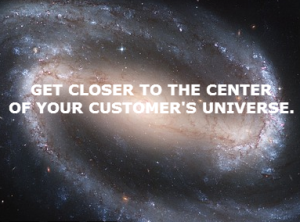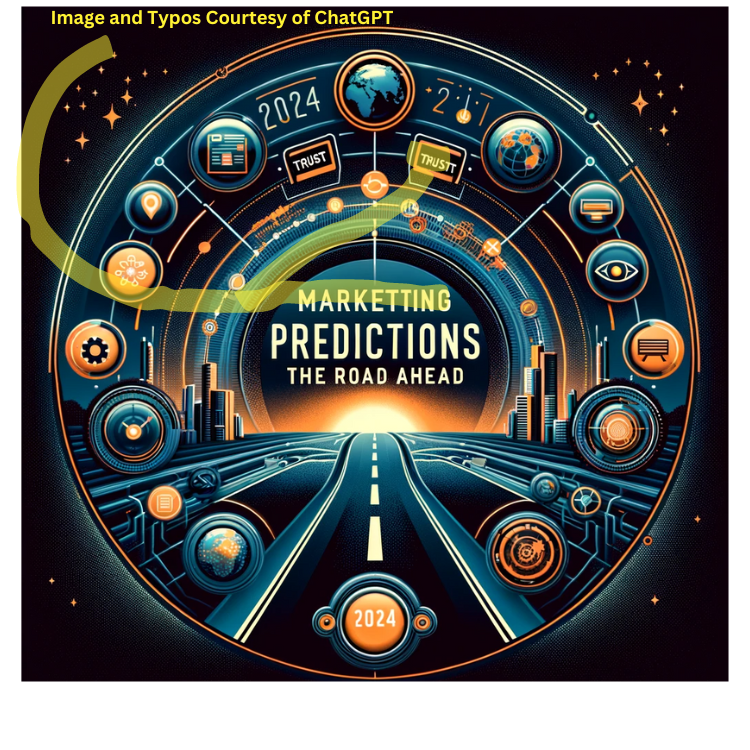
Thought Leadership: the New Revenue Imperative
Sales leaders are facing a tough reality. Revenue expectations are high, prospects are overwhelmed and it’s harder than ever to get their attention. How do

Back in 2001, I was invited to a luncheon with Google and had the good fortune of sitting next to their CEO, Eric Schmidt. At the time Google was only a few years old – a one dimensional but fast growing search engine company – and Eric was eager to get some feedback and ideas. He asked me what I thought…about my pain points, Google’s business and their opportunities. I told him about the need for more data to understand with transparency how to optimize advertising on Google. And beyond that I said, “Eric, you’re sitting on a goldmine of data. What if you set it free and made it readily available to customers? Imagine the ecosystem you could build around that data. Agencies, analysts and marketers would all start relying on it…” Eric leaned in with a twinkle in his eye and said, “I can see it. I can.” Google engineers were probably working on just that at the time. And looking back, we may have been having one of the first conversations about what eventually became Google Analytics, a product that propelled a revolution data-driven marketing.
 I’m no ecologist in the scientific sense but will offer this definition. It is a business community or network formed around a company’s mission, assets or products that supports members, builds customer relationships and adds value that scales through ancillary services. When value is created by members – through new services, functionality and content – it feeds the network, increases the importance (and/or size) of the ecosystem and makes the company behind it more indispensable.
I’m no ecologist in the scientific sense but will offer this definition. It is a business community or network formed around a company’s mission, assets or products that supports members, builds customer relationships and adds value that scales through ancillary services. When value is created by members – through new services, functionality and content – it feeds the network, increases the importance (and/or size) of the ecosystem and makes the company behind it more indispensable.
The result? You get closer to center of your industry’s universe and your customer’s universe.
Many technology companies, and famously Google, have built empires through their ecosystems. Google Analytics, for example, has spawned a whole economy of vendors, consultants and apps devoted to building on (and optimizing) its analytics. Their ecosystem is nurtured with APIs, structured partner programs, communications support, user conferences, and more.
Salesforce has mastered the art of the ecosystem. Their APIs and App Exchange they have spawned an entire industry devoted to enriching their core product. This year their mega conference, Dreamforce, had 135,000 registered attendees from 91 countries and 2000 speakers from their customer base and partner network. Very sticky stuff.
Let’s face it, not every company can be like Google. But there are still things you can do to make your company more central and more relevant to your customers. Here are a few ways.
Creating an ecosystem – or taking steps in that direction – is not just for technology companies. Let’s take a packaging company for example. Many parts of the packaging industry are easy to imitate and have low barriers to entry, which makes for intense competition and hurts profits. You can’t get further from Google or Salesforce than that. How can a packaging company create an ecosystem?
What if the company collected data from its customers (and elsewhere) on the most innovative uses of packaging? What if that data were standardized with benchmarks and trends for the industry and shared with suppliers, consultants and others who supported packaging innovations—with the understanding that their developments be fed back to the company – and celebrated through special reports, events etc? What if they created a best-in-class partner program to provide specialized capabilities for customers? Participating suppliers who provide add-on value – waterproof, shake-proof, anti-theft, anti-rust, mold-proof and anti-pollution aspects of packaging – might be attracted to the company’s ecosystem. They’d want to be associated with thought leadership, recognition and a network with broad reach in the industry. Additional capabilities would enable the company to meet a broader range of needs for customers, and might enable it to expand into new markets. This is not your grandfather’s corrugated box company.
This is a bigger question than can be answered here. It would be doing you a disservice to try in this format. But you should ask: how can you tap into a core part of your business and encourage outside development around that core in ways that add value and feed on itself to your benefit?
There is no one right answer or a right way to create an ecosystem. But important lessons can be gleaned from players like Google who have gotten it right for their business. While being the center of your industry’s universe is an audacious goal, there can still be powerful benefits even if it you just move a step closer to that center. And, who knows, that process might just be sparked with a single customer conversation.

Sales leaders are facing a tough reality. Revenue expectations are high, prospects are overwhelmed and it’s harder than ever to get their attention. How do

Marketing Predictions for 2024 – A Roundup More big changes are coming in marketing. We reviewed marketing predictions for 2024 from 15 leading companies, which

Are Data Gaps Holding Back Your Marketing and Sales? You know your business. You’ve gotten close to your customers, hired smart people and been successful.
New solution for Sales and GTM Leaders - build relationships, improve outreach and speed up sales